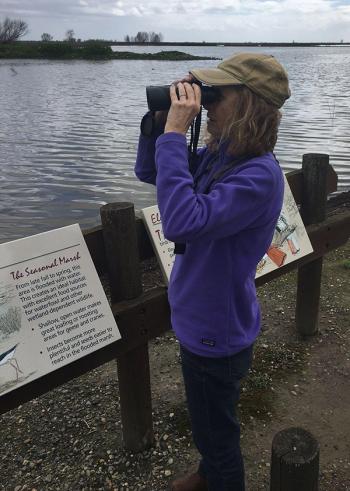Let’s Fight for Our Planet!
“The rate of change is something that we have never seen before as a planet. And it’s measurable; you can’t argue with that. We have the data. We should pay attention to it now, immediately, and not later.”
- Hog Island Oyster Company owner Terry Sawyer, headquartered in Marshall, California
Our last blog by Jane Silberstein revealed the beauty of the coral reefs of Fiji (I wish I had been on that trip!) and how climate change affects those extraordinary reefs.
Jane shared how changing ocean chemistry – ocean acidification – makes it more difficult for corals to build their reefs because they can’t absorb the necessary calcium carbonate. It’s our actions over the last 200 years that have changed the ocean: we have released about two trillion tons of carbon dioxide into the atmosphere. And about a quarter of that has been absorbed by the oceans.

Corals aren’t the only marine creatures in trouble because of changing ocean chemistry. Oysters, and other molluscs, are also in trouble. Oyster farmers start with larvae –tiny oyster babies. But, in the Pacific Northwest at certain times of year, the water has been too corrosive for the larvae and they have been dying in large numbers. These very young oysters use a form of calcium carbonate to build their shells but the shells dissolve really easily in more acidic waters.
Ocean acidification in the ocean means less carbonate, which oysters, scallops and other shellfish need to build their shells. With increasing acidity, the shells are thinner, growth is slower and death rates rise. This is happening now, here on the Pacific coast. If we want a healthy ocean and the local economies based on it, we can all act now in our communities and in our country to can slow climate change.
For additional information listen to the podcast For Oysters, Challenges and Hope in the Changing Ocean from Science Friday.
Lesson Take Away:
Human actions have accelerated ocean acidification, but human actions can also slow down the process! There are many things we can do on an individual, community or global level that will help reduce the effects of ocean acidification. There are two main goals here: 1) Use and create energy more efficiently so there is less CO2 being put into the atmosphere. 2) Protect marine habitats and wildlife so that the ocean is more resilient and can bounce back from the damage that has already been caused.
from climateinterpreter.org

My passion for the natural world began as a child on the rocky shores of Maine, and in streams and woods in elementary school. My connection to all of nature continued with a path to a M.S. in animal behavior and ecology. As a resident and interpreter of the central California coast, I get out on the ocean and into the tidepools and mudflats as often as I can. I’ve researched the natural history, oceanography, marine life and ecosystems, and human history of this coast for decades.
As one of the early employees of the Monterey Bay Aquarium, I am committed to interpreting ocean life and habitats to the general public. Since those early days, I’ve been involved in research, interpretive planning and writing of exhibitions for aquariums and natural history museums throughout the world. It is my pleasure to help create and develop content for Shape of Life.
















